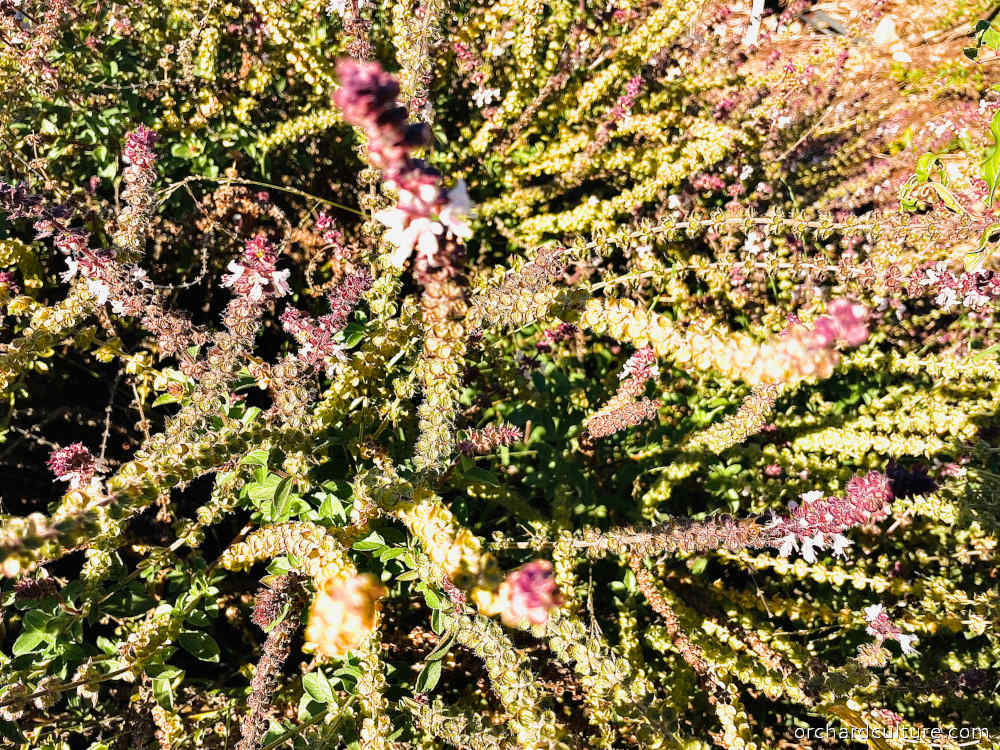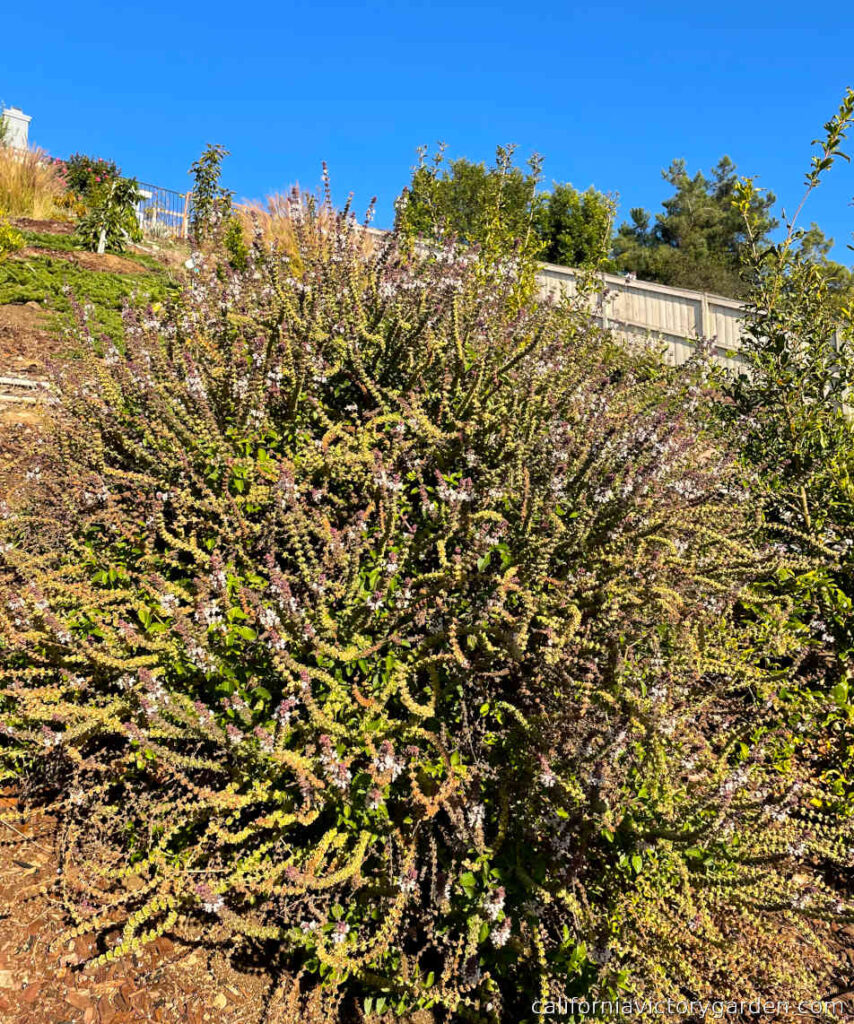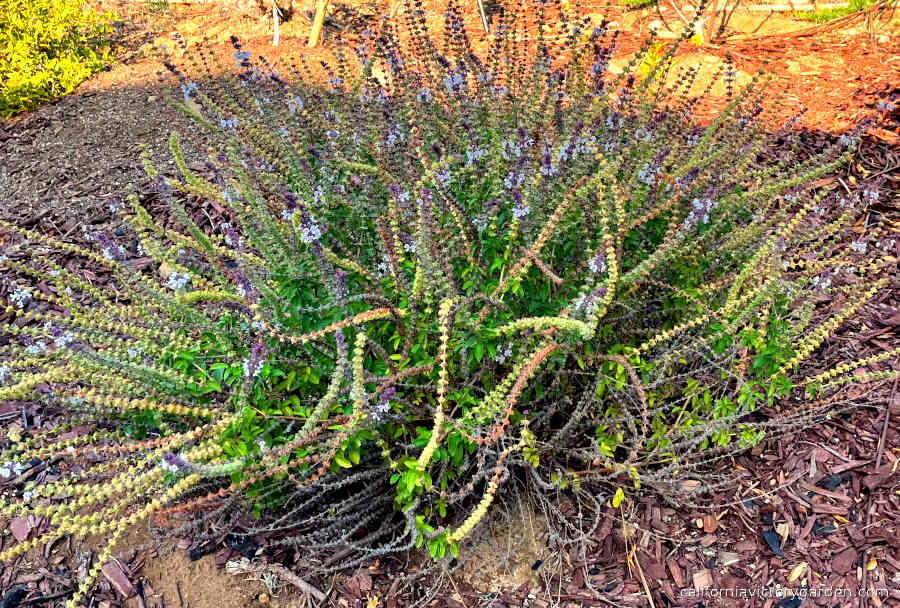
African Blue Basil – The Best Basil for Homegrowers
African Blue Basil is my favorite basil for a very simple reason. It’s perennial, which means you can keep it growing year after year.
Traditional basil varieties you may be used to are mostly annual herbs, which means they only live for less than a year and then you have to replant for the next season.
African Blue Basil, on the other hand, is quite hardy and will survive winters in many parts of California.
It grows well in USDA zones 9 – 11.
Table of Contents
Background
Where Does African Blue Basil Come From?
African Blue Basil is actually a hybrid. It’s a cross between camphor basil found in East Africa and sweet basil.
While the name might lead you to think it was found in Africa, the cultivar actually originated in the United States. An American grower happened to have the two parent varieties in close proximity, and when they crossed by chance, the result was African Blue Basil.
How to Use African Blue Basil
The leaves of African Blue Basil can be used to prepare pesto just like other basil varieties.
No doubt, what an herb ultimately tastes like is a major factor when deciding what to plant.
Frankly, there is quite a bit of misinformation about African Blue Basil, which I strongly disagree with.
Some sources claim it has a strong camphor taste but personally I have never tasted anything off with African Blue Basil and very much enjoy using it for pesto.
African Blue Basil is also said to have numerous health benefits but I have yet to see any of them confirmed in scientific studies, so I’m abstaining from using it for anything other than pesto for now.
African Blue Basil vs Other Types of Basil
As I touched on earlier, African Blue Basil stands out as a perennial basil variety.
I have also found it to be remarkably resilient and to grow much faster than other basil varieties I have tried out.
From a practical perspective, the fact that I can keep it in the same spot in the ground and enjoy the herb throughout the years in my opinion makes it the best basil variety in existence.
Although African Blue Basil grows quite quite tall and wide, you won’t have to worry about it becoming invasive. It’s actually a sterile hybrid. You can always trim it back.
If you want to propagate it to other spaces in your backyard, you will either have to make use of cuttings or purchase additional plants from a nursery.
The fact that it’s sterile also explains why it keeps blooming throughout the year. It never produces viable seed, so it keeps on going when other have already dropped its blossoms.
African Blue Basil is best grown in full sun with at least 6 hours of direct sunlight per day.
It prefers well-draining soil but it is also drought-tolerant, so it’s good to plant on a slope or hillside.
As with other basil varieties, you will need to pinch it frequently to stimulate foliage and make it branch out. The leaves can be harvested throughout the growing season.
African Blue Basil in My Backyard
I got 3 African Blue Basil plants from my local nursery. They came in small pots, just a quart each. I never expected them to grow as quickly as they did. They are now about 4ft tall and 3ft wide. They look like big bushes.
One unexpected benefit of African Blue Basil is that it’s a great way to attract pollinators, especially bees. This is especially important if you have fruit trees and other edibles planted nearby.
Although it has the word blue in its name, its blooms are more purple in color and they never seem to stop. They seem to be blooming throughout the year, winter, spring, summer and fall, at least here in Southern California. This is likely another reason why they are such a great bee magnet.
Before I planted African Blue Basil, I never saw so many bees in my backyard. The bees are all over the African Blue Basil plants but I’m sure the other plants nearby also benefit from their presence.
There is some disagreement as to what extent it is drought-tolerant but I’d say it seems more resilient than the average plant, especially more so than tropicals. I have kept it well-watered on a weekly basis of course and from what I have seen that was enough to easily withstand all the heat waves we get in Southern California. Perhaps this should come as no surprise given its East African heritage.



Why You Should Grow African Blue Basil in Your Backyard
This is rather straightforward. If you want to plant an edible herb that is easy to care for as a perennial and also great to attract pollinators, you absolutely cannot go wrong with African Blue Basil.
Additional Resources
University of Florida – Landscaping for Honeys
